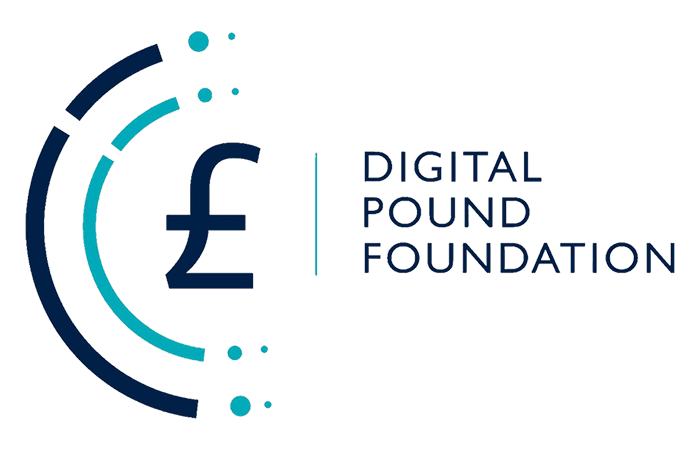Author: Jannah Patchay, Originating Member, Digital Pound Foundation
The genie is out of the bottle. The introduction of new forms of digital money – whether public or private in form – is irreversible. And, given that money touches everyone and everything, its implications are enormous.
A global race has developed between private and public protagonists – the issuers of these new forms of digital money. The ability to maintain the stability, safety, and security of financial markets – and access to money and payments infrastructure – is therefore of profound social and political significance for all central banks and governments. These new forms of digital money create opportunities for radical transformation of the ways in which business is done, value is exchanged, and services are provided and received. They also give rise to risks and challenges, which must be recognised and addressed.

The game is afoot
Around the world, this shift towards new forms of digital money is no longer merely theory, but is already happening in practice. Different jurisdictions are already moving ahead with projects at different speeds and levels of scale.
In the Bahamas, the world’s first fully deployed CBDC, the Sand Dollar, was officially adopted at scale in October 2020. China’s Digital Currency Electronic Payment (DCEP) system is in advanced trials with live users. Jurisdictions including Canada, Sweden, Singapore, and Thailand, amongst others, have recently or are currently engaged in various stages of pilots and experiments. CBDCs are being taken extremely seriously by actors across a range of sectors, as evidenced by initiatives preceding the Digital Pound Foundation (DPF), such as the Digital Dollar Project in the US, and the Digital Euro Association in the EU.
Initially, at least, CBDCs represented a reaction from central banks to proposed new forms of privately-issued digital money, most notably Meta’s (formerly Facebook’s) Diem (formerly Libra). There has since been a growing recognition of the wider benefits associated with CBDCs beyond their use as payments instruments. This includes opportunities for innovation and competition arising from programmable, digital-native central bank-issued money. Nevertheless, adoption of any CBDC is heavily dependent not only on its technical features, but also the way in which characteristics such as privacy, resilience, security, and consumer protection are built into its design and that of its accompanying infrastructure.

The evolution of money
The introduction of new forms of digital money will lead to the coexistence of three forms of fiat currency: cash (an existing form of public money), commercial bank money (the existing form of private money), and new forms of digital money (which may be further subdivided into public CBDC, and privately issued systemically important stablecoins).
In the DPF’s view, public interest will likely be less in the nature of CBDC as central bank money, and more in the characteristics that it displays, such as the extent to which it supports privacy, its ability to act as a digital alternative to cash, and whether it is programmable “smart” money that can deliver additional utility and benefits.
Should new forms of digital money be widely adopted by the general public, it is likely that consumer holdings may migrate away from commercial bank deposits. This would certainly create a potential impact for commercial bank money, its creation, and the wider effect on the lending and financing activities undertaken by traditional banks.
This is not necessarily a blocker to the adoption of new forms of digital money, although it could lead to a transformation of the way in which financial services are offered and consumed, and of the business models underpinning the provision of financial services. These new forms of money are no stand-alone freak of monetary innovation. Money is a servant of a greater force: value interaction. It is not the driver.

Powering the shift to a digital economy
The driver now is the digital revolution and the shift to a digital economy. And one of the most powerful forces for change within that revolution is the mechanism by which something is exchanged for something else. The new mechanism – indeed the revolution itself – was only made possible by the advent of advanced computing technology and by the internet. Together they have spawned a host of new ‘frontier technologies’ (such as cloud computing, artificial intelligence and machine learning, advanced robotics, distributed ledger technology, the internet of things, and quantum computing).
As a result, even the things that are being exchanged are undergoing an evolution. Assets are being fractionalised, redefined, and qualified in ways never before possible. The internet of things is introducing new ways of consuming products and services, and of transacting. The entire process of exchanging value is undergoing change.
Enterprises across the world have therefore been working on new infrastructures to support what is becoming, in effect, a new operating system. Early models include the service constructs of the new marketplaces – such as Amazon, Alibaba, WeChat, Facebook – that are built on this new operating system. More far-reaching infrastructure work stretches beyond even those. On top of that, the digital revolution, and the new operating system to which it gives rise, has the capability to restore and reinforce social trust and the common good, and to better reflect our changing and much-needed attitudes to value, particularly the ways in which value is impacted by environmental and social outcomes. Money is rightly adapting to facilitate this metamorphosis, and any discussion of new forms of money must sit within this new, all-enveloping construct of a digital economy.
This is the context in which the Digital Pound Foundation views the role of new forms of money. It is the prism through which we view their potential applications, use cases, benefits – and also their potential risks and impacts on the status quo. As such, our focus as an organisation is not only on the formation of a Central Bank Digital Currency (CBDC) for the UK, but also encompasses discussion and analysis of private forms of digital money such as stablecoins. Both of these elements – public and private – are fundamental to how a digital pound may end up being created, as well as to the UK’s transition towards a digital economy.
























































